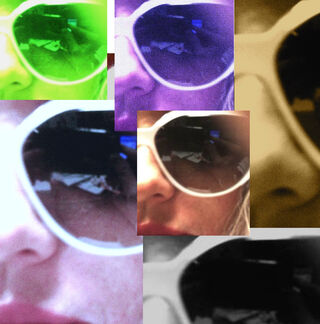Education
Why Critical Race Theory Should Be Taught
Understanding the psychology of language is essential to understanding CRT.
Posted July 1, 2021 Reviewed by Kaja Perina
Key points
- Critical Race Theory (CRT) is premised on the idea that racism is not an aberration, but rather, it is systemic and woven into the social fabric.
- A CRT-informed lens has gained prominence in universities, K12 education, and many workplaces, but some think CRT should not be taught.
- CRT is a complex, linguistically constructed lens for perceiving the world, but is often presented as truth.
Critical Race Theory (CRT), as some of its most knowledgeable proponents admit, is profoundly “unlike traditional civil rights.” So how has it successfully pushed liberal ideas about civil rights out of the national conversation about social justice and diversity — and until fairly recently, without setting off alarms?
The answer lies in a particularly canny understanding of the psychology of language.
We tend to assume that the proper function of words is descriptive. We tell the truth, make inaccurate assertions, lie, and give opinions — all of which others can debate. Philosopher John Searle calls this use of language a word-to-world direction of fit. Our words are used in an attempt to “fit” some existing fact about the world.
But we can also use language to make the world fit our words by using language to create a kind of lens.
For example, when prune growers wanted to increase sales, they discovered that although people associated other dried fruits (like apricots) with convenience and tastiness, prunes were associated with laxatives. The solution was to change the name to “dried plums.”
This world-to-word direction of fit created a kind of interpretive “lens” that altered the way people saw the dried fruit. Sales increased for the first time in years. Then, when gut health became a consumer focus many years later, dried plums were transformed back into prunes.

A linguistically constructed interpretive lens is like a pair of glasses with colored lenses. What is obvious about wearing colored lenses is that they change the colors we see: What once appeared blue will appear green if the lenses are yellow, and purple if the lenses are red. Somewhat less obvious is that the color of the lens can also make some things easier to see — and other things harder or even impossible.
What Is Critical Race Theory?
Legal scholar Kimberlé Crenshaw recognized the power of world-to-word direction of fit when she coined the term “intersectionality.” The word created a lens through which a legally invisible, yet very real, form of discrimination could be perceived. Later, as the term took on additional associations, something as foundational as identity was fundamentally transformed.
Critical Race Theory (CRT), also coined by Crenshaw, informs an even more complex, linguistically constructed lens. The uptake of specific terms from the ideology and its offshoots creates a particular way of seeing race, power, justice, and even knowledge and truth.
CRT ideology is premised on the assumption that racism is not an aberration — rather, it is “systemic” and inextricably woven into our social fabric. Consequently, what one sees using the CRT lens is a racial caste system that relegates people of color in the U.S. to second-class citizenship while affording others “white privilege.”
The way the term “antiracism” has been defined and popularized by author Ibram X. Kendi encapsulates the correlative view that white people can be deemed “antiracist” only while they are actively working to “dismantle” racism — defined a particular way. Using this lens, “antiracist” discrimination is required to remedy racist discrimination, and it is not possible to see anyone as “not racist.”
The Debate About Critical Race Theory
The way race and justice appear using the CRT-informed lens has gained prominence in universities, K12 education, and many workplaces. But there are other valid ways of interpreting racism, justice, identity, and other constructs on which CRT focuses. Not everyone consents to using the CRT lens, but in some circumstances, such as in schools, it is difficult, if not impossible, to openly refuse.
As a result, across the country, lawmakers on the right have drafted bills to keep CRT-informed pedagogy (“Critical Pedagogy”) out of public schools. Organizations have sprung up to help parents and teachers combat its implementation in K12 education. President Trump attempted to ban related programs and curricula with an executive order.
Viewed through a CRT lens, these efforts are simply additional evidence of the white supremacist culture CRT adherents intend to dismantle. Proponents accuse opponents of either not understanding what CRT is, or resisting Critical Pedagogy because of a combination of what proponents see as an anti-Black denial of the realities of racism, discomfort with the current push for more diversity in the workplace, and an unwillingness to allow children to learn about America’s racist past.
Far from being understood as a linguistically constructed lens, however, Critical Pedagogy is often described by advocates as an accurate view of current and historical oppression. Proponents, therefore, see it as disingenuous to claim, as President Trump’s now-defunct Executive Order did, that trainings grounded in CRT contain “divisive concepts,” “race or sex stereotyping,” and “scapegoating.”
Opponents, looking through a liberal-democratic lens, fear that Critical Pedagogy is rending the fabric of democracy. Concerned parents worry that children are being taught to experience themselves, their peers, and all those they encounter only in terms of oppressors or victims. They see their children being required to adopt a totalizing ideology that divides the world into identity groups, allies versus enemies, “us” versus “them.” They fear critical theory is being used as a replacement for critical thinking.
Neither side can see what their opponents see because each is using a different lens.
On the surface, the problem of whether a “critical pedagogy” should be permitted in schools or government-funded programs seems to be a matter of whether it can successfully address issues of race and inequality in the U.S. or is, instead, a malevolent ideology cloaked in the language of civil rights.
But there is a deeper problem.
When proponents argue that CRT is not being taught in K12, they are right. Instead, without allowing dissent or debate, and often with no mention of Critical Race Theory at all, many schools, programs, and workplaces are requiring students, faculty, and employees to interpret themselves, others, and the world through a CRT-informed lens. Rather than allowing for a variety of interpretations, that one lens is presented as the truth.
It is as if colored contact lenses have quietly been applied in the middle of the night, and in the morning, when everything looks different, no one is told about their new lenses. They are meant to think they are finally seeing clearly.
This is not education. This is indoctrination. And it is profoundly illiberal. Education, at least in a liberal, pluralist democracy, requires teaching a diversity of perspectives, positions, interpretations, and ideologies, providing the opportunity to see through many different lenses. Through a CRT lens, however, competing theories can only appear to be evidence of racism and oppression.
Social psychologist Jonathan Haidt likens Critical Race Theory and related ideologies to the cuckoo bird. Not because of the bird’s association with insanity, but because it is a brood parasite. The cuckoo successfully mimics the songs of other species in order to avoid detection while it lays its eggs in other birds’ nests. Then, when the cuckoo hatches, it pushes the other eggs out of the nest. Afterward, the deceived parent bird, whose actual offspring have all been killed, has only the cuckoo hatchling to feed and nurture.
School curricula and diversity programs ought to teach about Critical Race Theory, its history, underpinnings, precepts, and goals. And it should be taught alongside competing theories — together with the critical thinking skills with which to evaluate them all.
Regardless of whether Critical Race Theory is a positive or pernicious ideology, teaching it is not the problem. Not teaching it is. ♦
Pamela Paresky, PhD, is Visiting Senior Research Associate at the Stevanovich Institute on the Formation of Knowledge at the University of Chicago, Senior Scholar at the Network Contagion Research Institute, and the author of the guided journal, A Year of Kindness. Dr. Paresky's opinions are her own and should not be considered official positions of any organization with which she is affiliated. Follow her on Twitter @PamelaParesky, on Clubhouse @Paresky, and subscribe to her Newsletter: Paresky.Substack.com




